Average sizes and life expectancy for this breed:
Pembroke Welsh Corgis, also known as Pembrokes, PWCs, or Pems, are recognised as the smallest of the American Kennel Club's Herding Group. They were originally bred to herd cattle, sheep, and horses in the Pembrokeshire area of Wales, United Kingdom.
Pembroke Welsh Corgis are energetic, intelligent, and easy to train. These dogs are always willing and keen to please their owners. Unlike their cousins, the Cardigan Welsh Corgi, Pembroke Welsh Corgi dogs are very outgoing and social. So, they are generally great with kids and other pets.
The Pembroke is adaptable and affectionate. They can fit into any household or lifestyle, whether it is a big house in the country or an apartment in the city. Just make sure to provide daily exercise because these dogs have a lot of stamina and energy despite their small size. You will even be surprised at how quickly these short-legged dogs can move. Overall, the Pembroke is a great choice for families and first-time dog owners.
These adorable dogs are known for their intelligence and determination. Pembroke dogs are comical and active, and want to be involved in every action happening in the household. They are definitely big personalities wrapped in small packages!
See available puppies
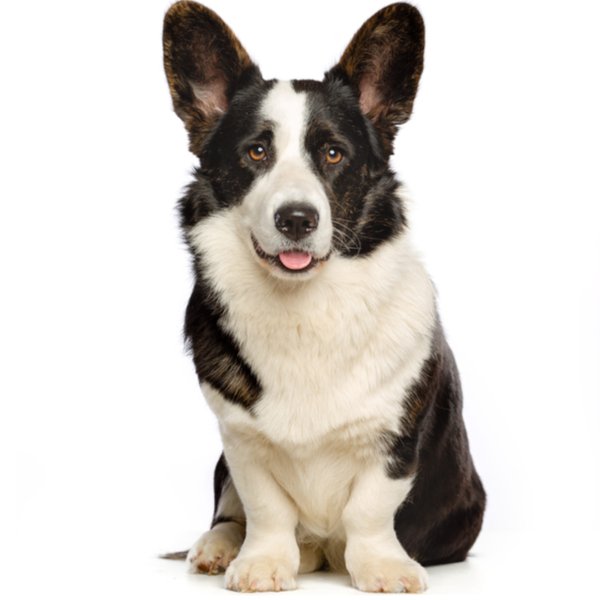

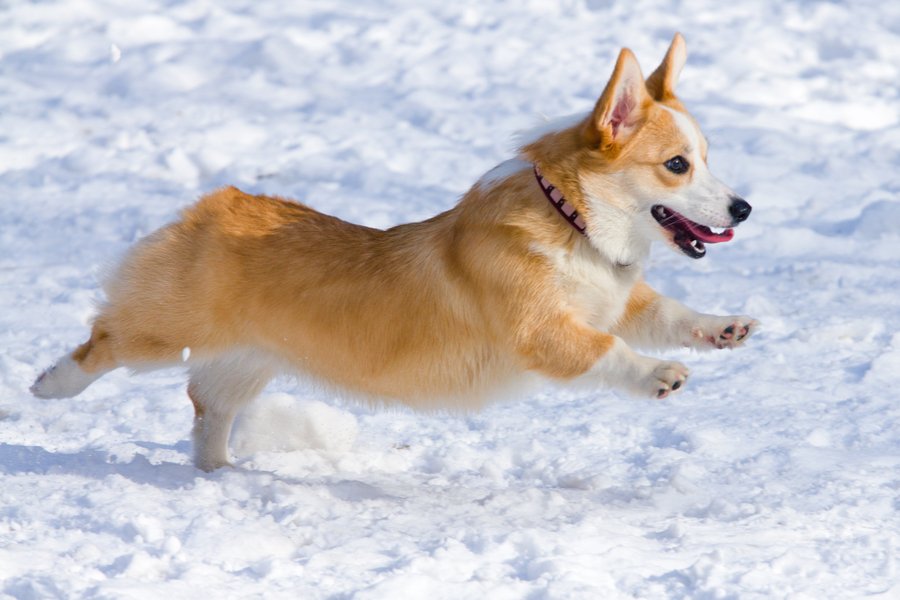


As the name suggests, Pembroke Welsh Corgis were originally bred and developed in the Pembrokeshire area of Wales to herd cattle from 1107 AD. They were also utilised to control pests on farms and as guard dogs to protect the family.
Cardigans are the older of the two corgi breeds It is thought to have descended from the German Teckel lineage. On the other hand, Pembroke Welsh Corgis are believed to be descended from Nordic Spitz breeds such as the Pomeranian, Finnish Spitz, and Norwegian Elk Hound. These dogs were brought to Wales as herding dogs by Flemish Weavers, where they became the foundation of the Pembroke Welsh Corgi breed we know and love today.
Both the Cardigan and Pembroke Corgis were classed as the same breed until 1934, so a lot of cross-breeding took place before then, which has given both breeds a very similar appearance. The meaning of the word ‘corgi’ is debated among experts. Some believe it is derived from the Welsh words ‘cor’ and ‘ci’ which translate to dwarf dog. Others claim the name is derived from another Welsh word, ‘curgi’, meaning ‘to watch over’.
Undoubtedly, Queen Elizabeth II helped to increase the popularity of Pembroke Welsh Corgis. She was a big fan of these dogs ever since she was gifted her first puppy in 1933.
Pembroke Welsh Corgis first arrived in America in 1934 by Mrs Lewis Roesler. In fact, her two Corgis, Little Madam and Captain William Lewis, were the first Pembrokes to be registered with the American Kennel Club.
Today, Pembroke Welsh Corgis are beloved the world over for their tenacity, playfulness, and loyalty.
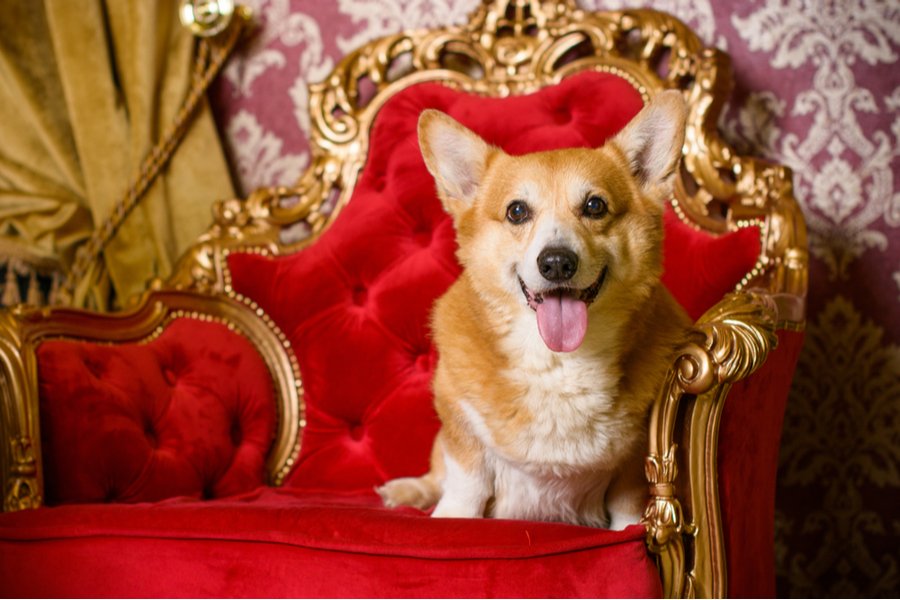
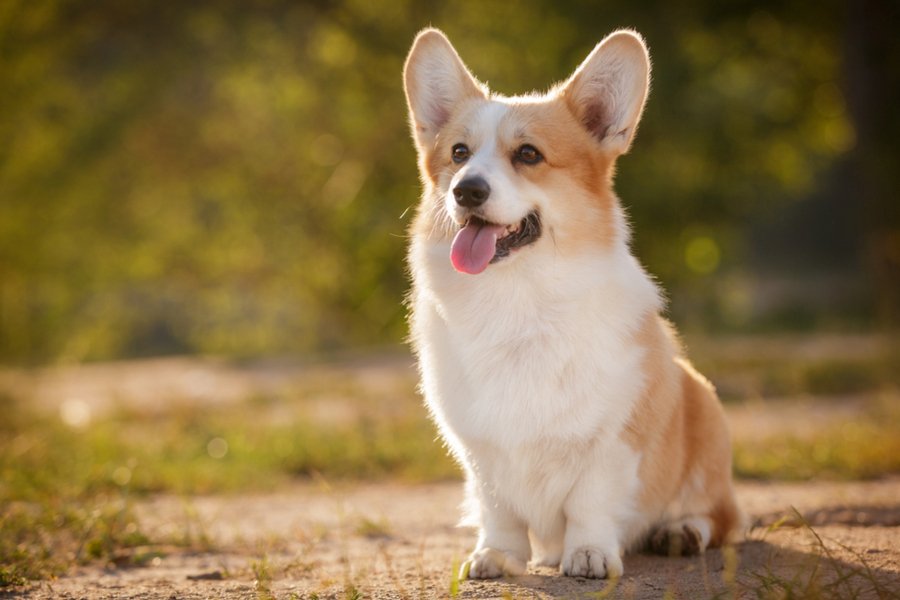
Similar to their Cardigan cousins, Pembroke Welsh Corgis have strong bodies that are held low to the ground. Their fox-like heads are somewhat flat between the ears. Their round, medium-sized eyes are usually brown and portray an intelligent and eager look. These dogs have muzzles that taper down to their black noses.
Their medium-sized ears are somewhat rounded and held erect on the head. Pembroke Welsh Corgis have strong jaws with a perfect scissor bite. Their forearms frame around their chest, and their elbows sit closely to the dog’s sides. Their well-laid-back shoulders are well-angulated.
Their muscular hindquarters are strong and flexible at the same time. They have short back legs that show a good amount of boning down to their feet. Pembroke’s oval-shaped feet are well-arched, strong, and have tight toes, with the two middle ones a little longer compared to the outer toes. Their firm pads are strong and their nails are short. The tail is set in line with their topline and carried somewhat above it when they are alert or excited. The tail was previously customarily docked.
The Pembroke Welsh Corgi’s double coat is straight and medium in length. These dogs have a denser undercoat that is a little harsh to the touch but is much softer than their top coat. The accepted coat colours are red, sable, fawn, and black & tan. All of these coat colours can have white markings on the legs, brisket, and neck.
Pembroke Welsh Corgis are recognised for their rapid, witty intelligence, and determination. These are energetic, animated dogs that never want to be left out of any activity.
As versatile farm dogs by origin, this dog breed requires exercise and training with a strong but gentle hand to make the most of their talents. Start training early to mould their boundless enthusiasm into something productive. Pembrokes make great canine companions for families and even for first-time dog owners, thanks to their high intelligence and eagerness to please.
Pembroke Welsh Corgis are known to be big barkers. They have a tendency to bark at anything and everything but this can be controlled somewhat with training. Furthermore, these dogs are highly social so they should never be left alone for long periods. This can lead to destructive behaviours such as excessive barking, chewing, or digging. These active, loveable, and often comical characters need regular mental and physical stimulation in the form of games, walks, interaction, and puzzle feeders. Even today, they are still one of the most popular herding breeds in the world.
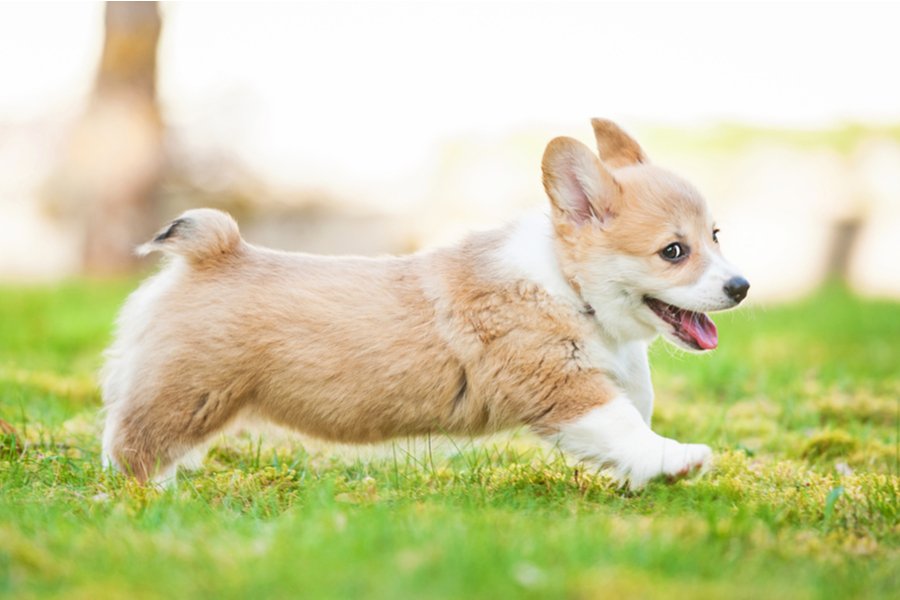
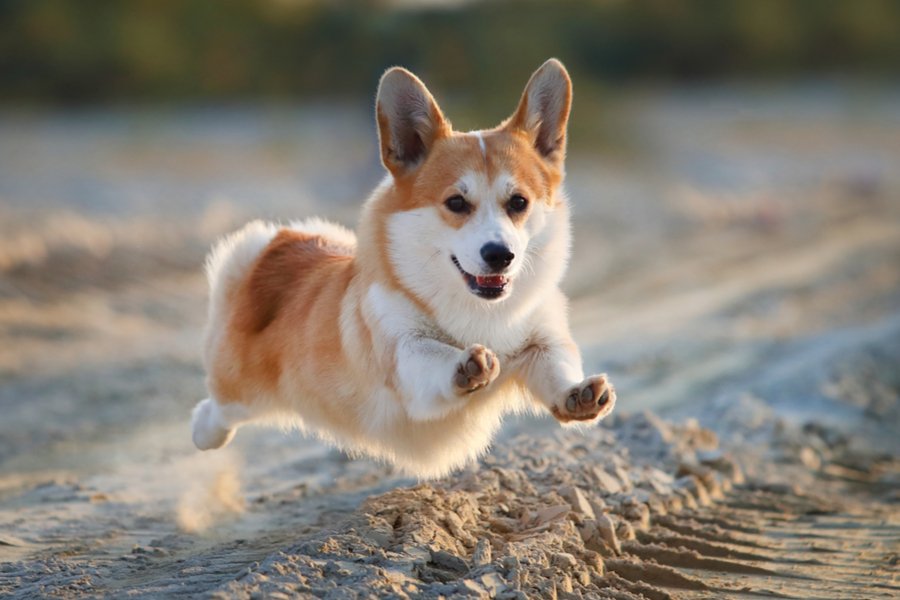
Pembroke Welsh Corgis have a reputation for being willful and stubborn. However, if you start training early, these dogs will respond very well to positive reinforcement methods due to their high intelligence. Training sessions should be fun to keep these active dogs engaged. These dogs love to play so incorporate games into your training. For example, get them to wait for a toy or play simple chasing games.
It may also be a good idea to enroll your puppy in obedience classes while they are still young, to set up a good foundation. Consistency and patience are key to successfully training a Pembroke Welsh Corgi. Furthermore, don’t be afraid to ask for advice from a canine behaviourist if you are struggling with a particular behaviour.
Alongside basic training such as potty training or leash training, you will also want to get your Pembroke used to general care tasks such as nail trimming, grooming, and ear cleaning. This will make your job much easier in the long run!
Pembroke Welsh Corgis have a thick, weatherproof double coat. They have a soft, lighter undercoat covered by a rough outer coat. This dog shed a fair amount of hair which increases significantly during the late spring/early summer season. A daily once-over brushing with a comb and a slicker brush will remove a lot of the hair. However, brushing 2-3 times a week will be sufficient enough. During the shedding season, give your Pembroke Welsh Corgi regular baths to help loosen the dead hairs. Saying that, be careful not to bathe them too often as this can cause the skin to dry out. In addition, you must ensure you thoroughly dry your dog before brushing, to strip out the undercoat.
For their dental health, brush their teeth at least 2 or 3 times a week to eliminate tartar buildup and bacteria. Daily brushing is best to avoid gum disease.
Trim their nails once or twice a month or as needed. It is best to ask a veterinarian or groomer for pointers if you are not experienced in trimming dog nails.
Their ears must be checked weekly. Signs of infection that may warrant a vet visit include redness, swelling, excess wax, and a foul odour. When you check their ears, wipe them out with a cotton ball dampened with a vet-approved, gentle, pH-balanced ear cleaner to help stop ear infections.
As you groom your Pembroke Welsh Corgi, check for rashes, sores, inflammation, redness, or tenderness on the skin that could indicate an infection or underlying health issue. Their eyes must be clear, with no discharge or redness.
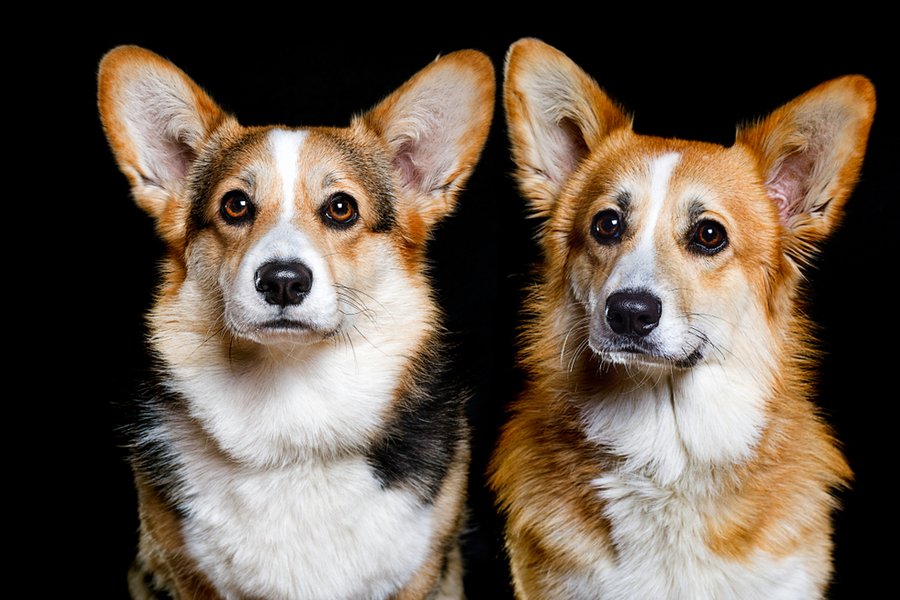
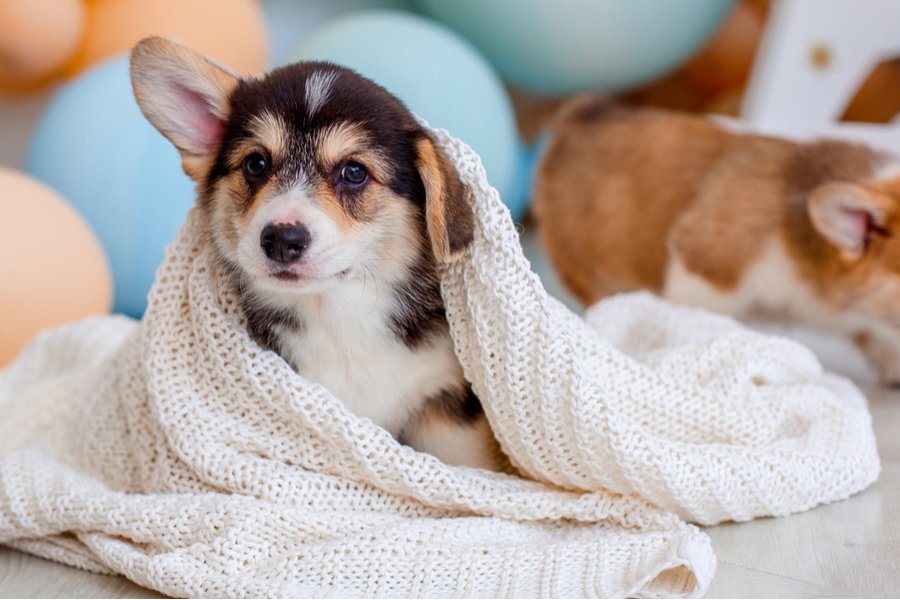
Pembroke Welsh Corgis are generally a very healthy dog breed as long as they are well cared for. However, there are certain health conditions that Pembroke Welsh Corgis might be prone to. When looking to purchase a new puppy, always make sure you contact licensed and reputable breeders. They will be able to perform DNA tests to ensure your dog does not have any underlying health conditions.
Some of the health issues that may affect Pembroke Welsh Corgis include:
Pembroke Welsh Corgis have an incredible adoration for children. However, because of their herding instincts, they might nip at a child’s feet or ankles. They are keen learners but must be trained out of this behaviour from a young age. They are also naturally good with other pets in the household, as long as they have been socialised with them from puppyhood.
Remember to always teach kids how to approach and care for dogs. Always supervise any interactions between them to avoid any biting, ear, or tail pulling. Teach your children to never go near any dog while they are eating because some dogs can get easily startled.
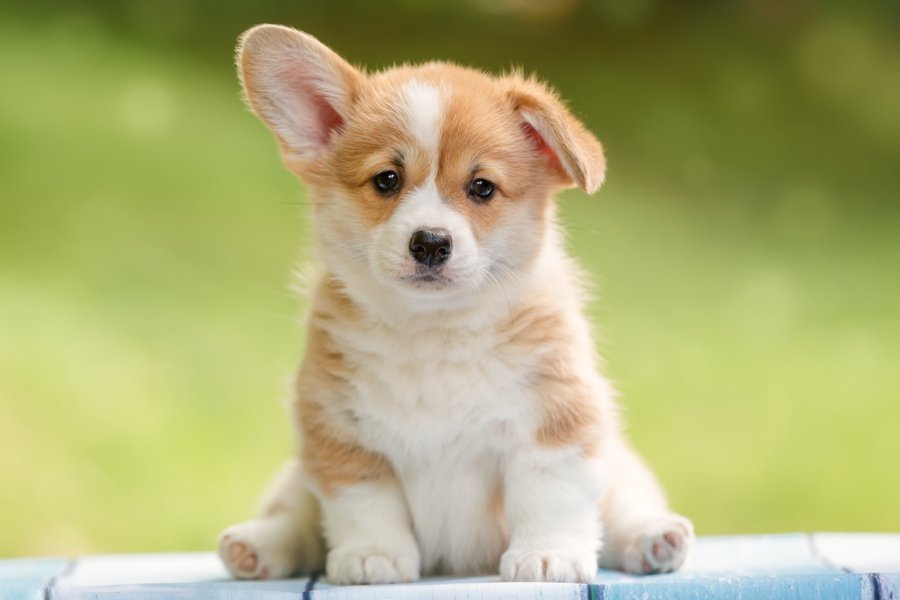

We can connect you with Breeders that are specialized in this particular breed.
See available puppies

Need some advice?
Whether you're a first time pet owner, an experienced pet owner, a new or long-time breeder, or just curious about pets, we've got you covered!

January 17, 2024
What Is The Personality Of Russian Blue Cats?
Russian Blue cats are most known for their distinctive shimmery blue-silver coat and piercing green eyes. However, this breed’s calm and gentle temperament is what makes them shine the most in the feline world.

January 17, 2024
10 Facts About Russian Blue Cat Breed
Russian Blues are one of the most aesthetically stunning cat breeds, with a gorgeous plush silvery coat and vibrant green eyes. However, it’s not only their appearance that is beautiful; their nature is too.

January 17, 2024
How To Choose The Right Cat Breed for You
Cats can make the most fantastic animal companions; they are adorable, friendly, and loving. However, not all felines are created equal. There are many different breeds, of which each has its unique personality traits.
Need some help?
Contact us to speak to our friendly advisor, who will gladly help you find your dream pet!



We are registered in England and Wales under registration number 12568840,
and our registered office is at 58-60 Kensington Church Street, W8 4DB London, England.
© 2023 The Pedigree Paws